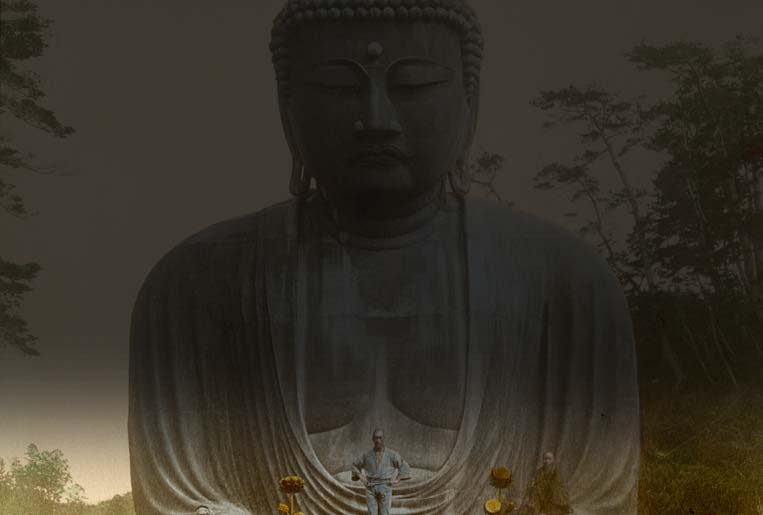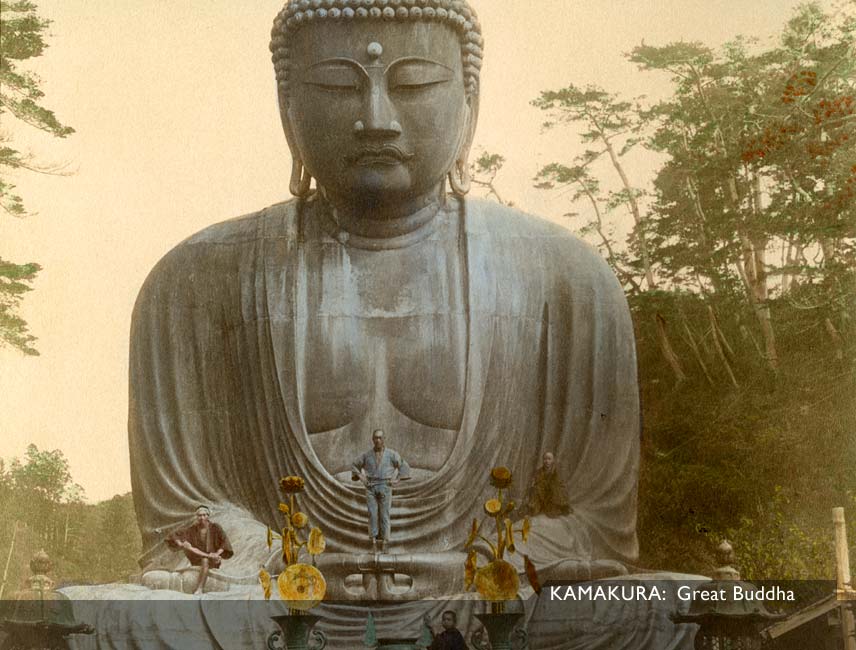Kamakura—Daibutsu
“Two miles beyond Kamakura we discovered the colossal form of Dai-butsu, or Great Buddha, rising above the surrounding trees. The broze figure stands on a stone pedestal at the head of a short flight of steps, and beside it is the priests’ little house. Dai-butsu’s expressionless face has looked down upon struggling mortality from its proud eminence for more than six centuries.
“At one time it was sheltered by a large temple, but that was destroyed by an inundation from the sea in 1494, and has not been replaced. The priests have opened a subscription list to rebuild the temple on a monumental scale, at a cost of 37,000 yen, and on the list I notices the names of a goodly number of Christian (?) Englishmen! Not to speak of the insanity of covering over one of the largest bronze statues known, the conduct of Englishmen in allowing priests to beguile them into giving subscriptions towards the erection of a heathen temple, is worthy of the severest censure.”
(
More)
Arthur H. Crow, Highways and Byeways in Japan, (London, 1883) p. 216
Kamakura—Daibutsu
“Dai-butsu being a favourite resort of Yokohama excursionists, both foreign and native, the priests drive a thriving trade in both the sale of liquor and in taking their photographs, standing on various parts of the statue. Although our priest worked on the old and somewhat difficult ‘wet plate’ system, he gave us a capital negative.”

“The Dai Butsu, the great bronze image of Buddha, which has kept Kamakura from sinking entirely into obscurity during the centuries of decay, stands in a tiny valley a half-mile back from the shore. The Light of Asia is seated on a lotus flower, his head bent forward in meditation, his thumbs joined, and his face wearing an expression of the most benignant calm. … Within the image is a temple forty-nine feet in height; and through an atmosphere thick with incense may be read the chalked names of ambitious tourists, who have evaded the priests and left their signatures on the irregular bronze walls. … During six centuries of holy contemplation at Kamakura, Dai Butsu has endured many disasters. Earthquakes have made him nod and sway on the lotus pedestal, and tidal waves have twice swept over and destroyed the sheltering temple, the great weight and thickness of the bronze keeping the statue itself unharmed.”
Arthur H. Crow, Highways and Byeways in Japan, (London, 1883) p. 218
Eliza Ruhamah Scidmore, Jinrikisha Days in Japan, (New York, 1891) pp. 38-39



